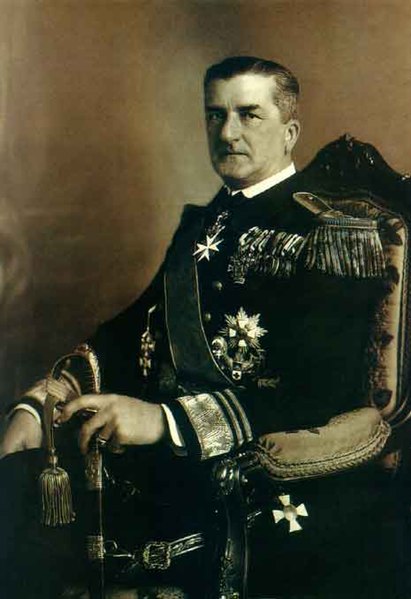Operation Panzerfaust was a military operation undertaken in October 1944 by the German Wehrmacht to ensure the Kingdom of Hungary would remain a German ally in World War II. When German dictator Adolf Hitler received word that Hungary's Regent, Admiral Miklós Horthy, was secretly negotiating his country's surrender to the advancing Red Army, he sent commando leader Otto Skorzeny of the Waffen-SS and former special forces commander Adrian von Fölkersam to Hungary. Hitler feared that Hungary's surrender would expose his southern flank, where Romania had just joined with the Soviets and cut off a million German troops still fighting the Soviet advance in the Balkans. The operation was preceded by Operation Margarethe in March 1944, which was the occupation of Hungary by German forces, which Hitler had hoped would secure Hungary's place in the Axis powers. This had also enabled the deportation of the majority of Hungarian Jews, previously beyond the reach of the Nazis, through uneasy cooperation with Hungarian authorities. This policy was, however, terminated as Soviet forces drew closer and the USAAF, based in Italy, began bombing Hungary, including Budapest.

Soldiers from 22 SS-Freiwilligen-Kavallerie-Division Maria Theresia review captured weapons in the courtyard of Buda Castle, including a Hungarian 40M Nimród anti-aircraft self-propelled gun (back) and a 40mm 40M anti-tank gun.
A Tiger II tank in Budapest near Buda Castle.
Kingdom of Hungary (1920–1946)
The Kingdom of Hungary, referred to retrospectively as the Regency and the Horthy era, existed as a country from 1920 to 1946 under the rule of Miklós Horthy, Regent of Hungary, who officially represented the Hungarian monarchy. In reality there was no king, and attempts by King Charles IV to return to the throne shortly before his death were prevented by Horthy. Hungary under Horthy was characterized by its conservative, nationalist, and fiercely anti-communist character. The government was based on an unstable alliance of conservatives and right-wingers. Foreign policy was characterized by revisionism — the total or partial revision of the Treaty of Trianon, which had seen Hungary lose over 70% of its historic territory along with over three million Hungarians, who mostly lived in the border territories outside the new borders of the kingdom, in the Kingdom of Romania and the newly created states of Czechoslovakia and the Kingdom of Serbs, Croats and Slovenes. Republican Austria, the successor of the former other half of the dual monarchy also received some minor territory from Hungary. Thus the post-1918 Kingdom can be described as a rump state. Hungary's interwar politics were dominated by a focus on the territorial losses suffered from this treaty, with the resentment continuing until the present.

Miklós Horthy, Regent of Hungary
István Bethlen, Prime Minister of Hungary.
Hungarian armor and infantry in retreat, August 1944





